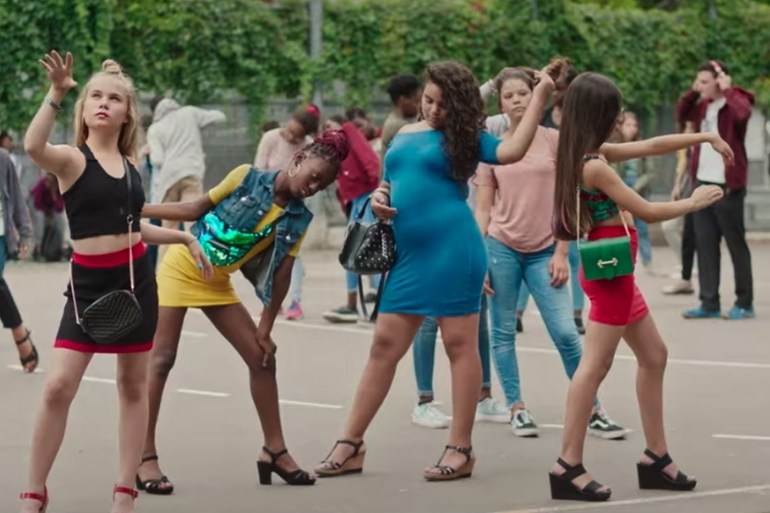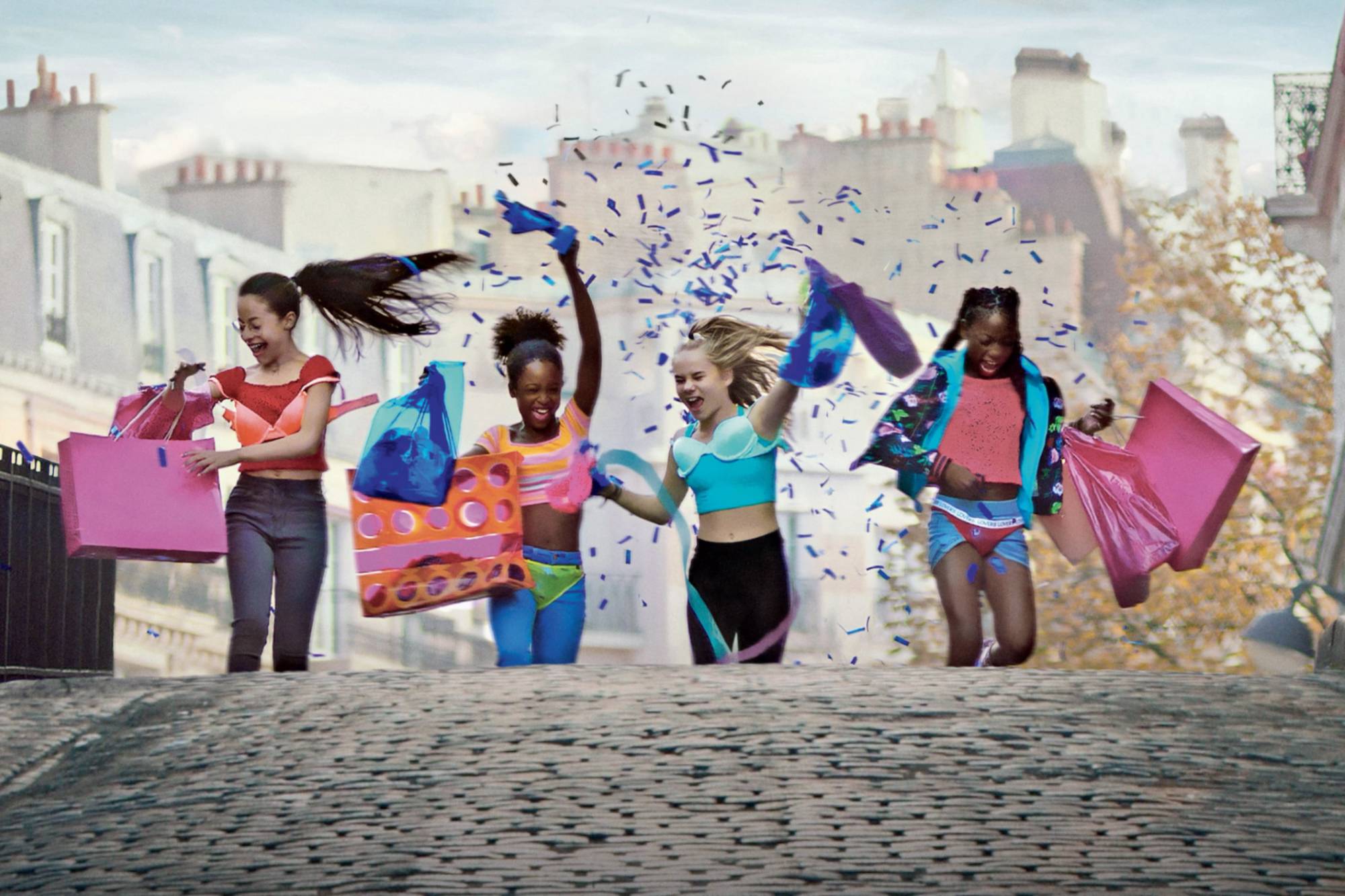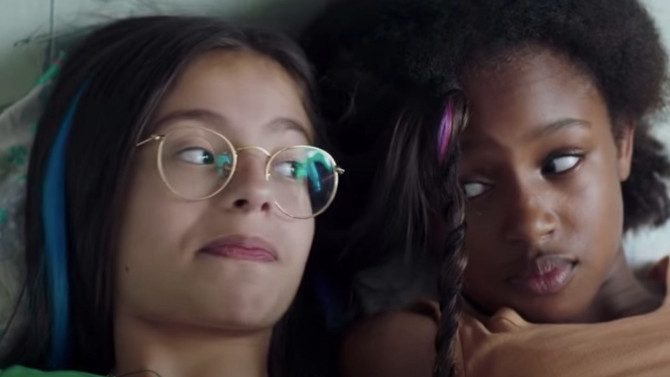There’s a fine line between depicting something and glamourising it – or in some cases, sexualising it. The new French language film Cuties definitely depicts 11-year-old girls who want to dance like women twice their age, meaning they wear skimpy form-fitting shirts and hotpants while gyrating and twerking to the music. But does it glamourise it? Does it sexualise it? There’s some debate about that. There are certainly a lot of shots of bare midriffs and insufficiently covered derrieres … to use the appropriately French term.
The movie has become the centre of a controversy Netflix has weathered since its release earlier this month, which, as is usually the case in these situations, has been driven most vociferously by people who haven’t seen it. Maybe they didn’t need to see it for the core part of their complaint to hold water. When the streaming service started advertising the film, it put these images of these pre-teen girls in their half-there clothes front and centre.
There have been demands to take the movie off the site because it promotes paedophilia. Some people have cancelled their subscriptions. Others have bombed IMDB with negative ratings to drive down its audience score (which currently sits at 2.5/10). The director, Maimouna Doucouré, gave an earnest explanation that the film criticises rather than glorifies the rapid maturation of young girls and their corruption by the images they encounter in the world. That she’s a woman may mitigate some of the complaints about the intention behind the film, but the gaze does sometimes feel male.
If Cuties is creating a discussion of how we shepherd adolescents into adulthood, then it’s probably worth all the fuss. Cuties has more than just the issue of whether girls are growing up too fast on its mind. Its main character, Amy (Fathia Youssouf), is from a traditional Muslim family that immigrated to France from Senegal, and the film has a lot to say about how the clashing of cultures creates further confusion. The film is also wary of the patriarchal structure of that religion, as Amy’s father has gone to Senegal to procure a second wife, leaving her mother devastated. So if Cuties doesn’t have enough detractors on the far right, it may also raise the ire of the Muslim community.
But Doucouré is following a distinctly French tradition of prodding the status quo. Throughout the country’s history, its thinkers have gone against the grain on issues of philosophy and sexual morays, and Cuties could be seen as an extension of that. Doucouré wanted to discomfit us, she has said in interviews, so we can ask ourselves what it means to be an 11-year-old girl who is flooded with imagery of social media celebrities shaking their tail feathers.
Amy learns of her father’s second marriage while hiding under the bed during a heartbreaking phone call made by her mother – part of a custom of informing acquaintances so she does not appear to be ashamed of the union. Around the same time, she sees a neighbour in her apartment building, Angelica (Medina El Aidi), dancing provocatively while doing laundry. She soon learns that Angelica and a couple of her friends – who profile as the mean popular girls in any coming-of-age story – are rehearsing to compete in a reggaeton dancing competition that they hope will blow them up. Though at first they tease and despise Amy, they eventually let her film them on her cousin’s mobile phone, which she has stolen. Secretly practising the moves at night in front of the bathroom mirror, she’s ready to step in when one of the troupe has to drop out.
Of course, running with the popular crew has its drawbacks. One theft leads to another, and so does one dereliction of duty, as Amy becomes increasingly frustrated with the expectation that she will help prepare for her father’s wedding. As the girls are trying to prove they’re older than they really are, believing that they won’t be taken seriously if they are seen as children, Amy figures she can provide value to them by demonstrating just how grown-up she can be.
Just from watching a few scenes of Cuties you would know that this is not some kind of cheap exploitation of underage female flesh. Merely making the main character from a family of Senegalese immigrants seems to rule out that sort of intention. Where Doucouré gets herself into some potential trouble is that she films the scenes of the girls dancing like real reggaeton videos are filmed. This means that the characters twist and slither like succubae, asking the viewer on the other end of the screen to come hither. Filming the girls from afar, or only from the waist up, might have solved this problem, but it wouldn’t have had the confrontational element the director was clearly seeking. We need to see these girls as they see themselves, as they aspire to be, in order to question the way society sexualises all women.
Because this can be construed as a polemic, things escalate fast. It’s not clear exactly how much time passes in the film – somewhere between one and three weeks – and in that short time, Amy goes from being the most timid of the girls to the wildest. The film probably sacrifices some realism in its attempt to dramatise the extreme emotional fluctuations of puberty.
What’s true, if not always real, is Amy’s perspective. Doucouré occasionally frees herself from the constraints of realistic filmmaking by showing us something Amy sees or experiences that isn’t really there. It’s just one mechanism for revealing Amy’s inner life, and the uncommonly strong grasp the director has of it. That may be no surprise, as Doucouré was also a Senegalese immigrant to Paris. The triggers on her young adulthood may not have been the same as today’s internet age triggers, but girls have always fought to stay afloat in a world that wants to drown them.



